Pakistan
CPEC model of two nations adherence to joint construction, sharing of high-quality resources: Chinese scholar
Published
2 years agoon
By
EDITOR
BEIJING, Jul 30 (APP): The China-Pakistan Economic Corridor (CPEC) is a model of the two nations’ adherence to joint construction and sharing of high-quality resources, which has promoted the socioeconomic progress of Pakistan, Li Yong, a senior research fellow at the China Association of International Trade said on Sunday.
Chinese Vice Premier He Lifeng, acting as the special envoy of Chinese President Xi Jinping, kicked off an official visit to Pakistan on Sunday to attend the Decade of China-Pakistan Economic Corridor (CPEC) celebrations.
The two countries, all-weather strategic cooperation partners, have enhanced comprehensive cooperation under the framework of the Belt and Road Initiative (BRI) during the past 10 years.
The CPEC is a flagship of the BRI, which has helped improve Pakistani people’s livelihood, and created many jobs for locals, experts said, noting that Western countries disparaging CPEC won conceal Chinese enterprises’ contribution to Pakistan nor hurt the iron-clad friendship of the two neighbours.
The Chinese Foreign Ministry said on Saturday that China hopes that He Lifeng’s visit will be an opportunity to implement the important consensus reached between leaders of the two countries, continue to build on past achievements and upgrade the development of the CPEC.
The country also hopes that the visit will consolidate and deepen the China-Pakistan all-weather strategic partnership, advance the building of an even closer China-Pakistan community with a shared future in the new era, and contribute to the development and prosperity of the region.
Before the launch of the CPEC, a signature project of the BRI envisaged by China, Pakistan was striving for economic survival, languishing in an energy crisis, with poor infrastructure and financial challenges. As a silver lining, the CPEC came to the rescue.
Within 10 years, the initiative was transforming Pakistan and bringing prosperity, Yasir Habib Khan, president of the Institute of International Relations and Media Research, told the Global Times.
As of 2022, the CPEC had brought $25.4 billion in direct investment to Pakistan and created about 236,000 jobs there. It helped Pakistan generate 8,000 megawatts of electricity and build 886 kilometres of national core transmission grid, according to the Chinese Embassy in Pakistan.
While China and Pakistan have kept on promoting high-quality development of the CPEC, Western media use debt traps and unqualified projects to smear the BRI project.
Facts speak louder than the smearing rhetoric. The achievements over the past 10 years in the construction of the CPEC are the best response to the ‘debt trap’ and other discrediting smears, Li told the Global Times.
One of the watershed developments during the 10 years was the high-octane operation of Gwadar Port, the crown jewel of the CPEC.
Gwadar was once an old fishing town, and now it is on a high tide of success with tangible socioeconomic progress, including the establishment of free trade zones there, the Eastbay Express Way, and the inauguration of the New International Gwadar Airport, according to Yasir.
Zhang Baozhong, chairman of China Overseas Ports Holding Co, told the Global Times that with the improvement of local ports and infrastructure including hospitals, airports and schools, Gwadar has now been transformed into a modern seaside city with a permanent resident population that grew from 80,000 in 2013 to 220,000 in 2023.
Zhang said that his company aims to build Gwadar into a smart port city by 2050 with a total population of more than 1.7 million and an annual GDP of $30 billion.
The Peshawar-Karachi Motorway (PKM), the largest transportation project under the CPEC, was completed in 2019. The project gave priority to hiring Pakistani employees, providing more than 23,000 local jobs, according to a statement China State Construction sent to the Global Times.
The PKM project has also helped propel the development of services industries such as catering, retailing and transportation, indirectly creating more than 45,000 jobs.
Danish, a manager of Power-China’s construction project group in Pakistan, told the Global Times that in the field of green energy, Pakistanis are impressed by the technology accumulation and construction efficiency of Chinese companies.
Power-China has completed the construction of 22 wind power projects in Pakistan, with a total installed capacity of 1.14 million kilowatts.
In connection with the 10th anniversary of CPEC, the CPEC Industry Chain Cooperation Platform was launched to kick-start a comprehensive services system covering key industrial cooperation in new energy, smart manufacturing, and the digital economy between China and Pakistan.
You may like
-


KKH to remain open year-round for all types of traffic
-
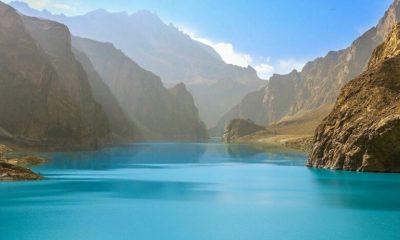

Health is in Food and Foods are in Hunza Valley
-


Pakistan known for World’s Highest Mountain Peaks
-
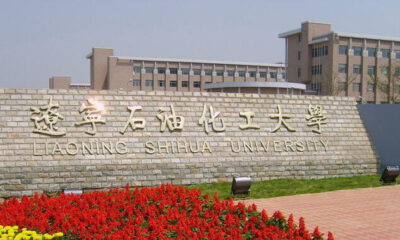

Chinese university launches training course for Pakistani employees
-
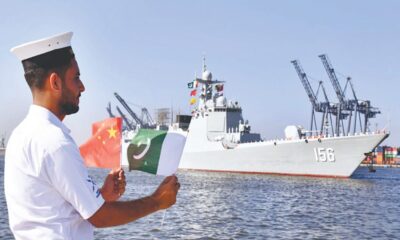

CPEC flagship project cornerstone of cooperative development: Acting CG Guangzhou
-
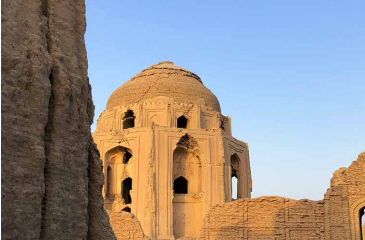

Judeir Damb enrichen Balochistan Archaeological
Pakistan
Unity, Faith, and Discipline: The Cornerstones of Pakistan’s Motto as “Aik Qaum” (One Nation)
Published
3 weeks agoon
May 28, 2025By
EDITOR
The guiding motto of Pakistan, “Unity, Faith, and Discipline,” holds profound significance in shaping the national identity of Pakistanis as “Aik Qaum” (One Nation). These three words, coined by the country’s founding father, Quaid-e-Azam Muhammad Ali Jinnah, form the bedrock of the national ethos. They represent the essential pillars upon which Pakistan was built and must continue to stand in pursuit of progress, solidarity, and global stature.
This motto is not just a political slogan or a patriotic catchphrase; it is an enduring call for the people of Pakistan to unite under a common banner of national purpose, to have faith in their capabilities, and to uphold the discipline needed for personal and national success. In this detailed article, we will explore the deeper meanings and implications of unity, faith, and discipline, and how these principles guide the vision of Pakistan as a united and resilient nation.
Unity: The Power of Togetherness
Unity is the first and foremost element of Pakistan’s national motto. It emphasizes the importance of national cohesion and solidarity across the diverse ethnic, linguistic, and religious landscape of Pakistan. As a nation that emerged from the crucible of colonialism and division, Pakistan’s unity has always been central to its survival and growth.
At its core, unity signifies a collective commitment to the country’s well-being, transcending personal or communal differences. Pakistan is home to a wide variety of cultures, languages, and sects, from the Punjabis, Sindhis, Pashtuns, and Baloch to religious minorities such as Christians, Hindus, and Sikhs. The concept of unity calls for embracing this diversity as a source of strength, rather than as a source of division.
Historically, the drive for unity was integral to the Pakistan Movement, which brought together Muslims from different regions of British India to fight for a common homeland. Quaid-e-Azam Muhammad Ali Jinnah recognized that only through unity could the Muslims of the subcontinent secure their political, economic, and social rights. His vision for Pakistan was one where all citizens, regardless of their background, would work together for the common good.
In modern-day Pakistan, unity remains vital for addressing the challenges of sectarianism, regionalism, and external threats. A united Pakistan is better equipped to deal with issues such as poverty, terrorism, and political instability. The concept of unity fosters a sense of belonging and national pride, urging Pakistanis to think of themselves as one people, with one purpose, under one flag.
Faith: Belief in a Higher Cause and in Ourselves
Faith is the second pillar of Pakistan’s motto and is deeply rooted in the spiritual and ideological foundation of the country. Pakistan was established as a homeland for Muslims, and faith in Islam has always been central to its identity. However, faith as a motto goes beyond mere religious belief; it encompasses a broader sense of confidence, trust, and belief in a higher cause, in the potential of the nation, and in the resilience of its people.
For Pakistan, faith is twofold: it represents both religious faith and faith in the nation’s future. Pakistanis draw strength from their spiritual beliefs, finding unity and purpose in the teachings of Islam, which emphasize justice, equality, and community welfare. This religious faith provides a moral compass for both governance and daily life, promoting values such as honesty, compassion, and responsibility.
Faith also refers to belief in Pakistan’s potential. Pakistan has faced numerous challenges since its inception in 1947, from wars and natural disasters to political turmoil and economic crises. Through it all, the faith of its people in the country’s resilience and eventual success has been unwavering. This faith in Pakistan’s ability to rise above adversity and build a better future remains a key motivator for both the government and the citizenry.
Jinnah, in his speeches, often urged Pakistanis to have faith in themselves, in their institutions, and in their destiny. He believed that faith in the country’s foundational principles would ensure its survival and prosperity. In today’s rapidly changing world, this faith is crucial in fostering optimism, innovation, and national pride among Pakistanis.
Discipline: The Key to Progress and Stability
The third and final element of Pakistan’s national motto is discipline, a principle that Jinnah regarded as essential for the development of a strong, stable, and successful nation. Discipline is the cornerstone of order, efficiency, and progress. It demands that citizens and leaders alike act with responsibility, accountability, and foresight.
For Pakistan to achieve its full potential, discipline is required at both the individual and institutional levels. On a personal level, discipline involves hard work, ethical behavior, and adherence to the rule of law. It requires Pakistanis to be diligent in their pursuits, whether in education, work, or civic duties, and to prioritize the common good over personal gain.
On a broader scale, national discipline means the effective functioning of the state, including the proper management of resources, the upholding of justice, and the fair enforcement of laws. A disciplined nation adheres to democratic values, maintains the integrity of its institutions, and operates with transparency and accountability. Discipline ensures that the country can handle crises, avoid corruption, and build a sustainable economy.
Jinnah himself was a model of discipline. His dedication to the cause of Pakistan, his meticulous planning, and his unwavering commitment to the principles of justice and fairness were key factors in the success of the Pakistan Movement. He emphasized that without discipline, a nation could not stand firm, nor could it achieve its desired goals.
Today, Pakistan faces numerous challenges that require discipline in governance, education, healthcare, and defense. The globalized world presents both opportunities and obstacles, and only through disciplined efforts can Pakistan compete on the world stage. Whether in fighting corruption, strengthening institutions, or promoting social cohesion, discipline remains a critical factor in Pakistan’s progress.
The Relevance of “Unity, Faith, and Discipline” in Modern Pakistan
As Pakistan navigates the 21st century, the principles of unity, faith, and discipline are more relevant than ever. These values are not just historical legacies but are guiding principles for Pakistan’s future as a vibrant, resilient, and prosperous nation. In an era of rapid globalization, technological advancement, and shifting political dynamics, these ideals provide a steady framework for national development and collective progress.
- Unity is vital for overcoming internal divisions and presenting a strong, cohesive front on the international stage.
- Faith continues to be a source of strength, providing hope, moral guidance, and belief in the country’s bright future.
- Discipline is crucial for tackling corruption, ensuring effective governance, and building a strong economy capable of competing globally.
In conclusion, “Unity, Faith, and Discipline” remains the heart of the Pakistani identity as “Aik Qaum” (One Nation). It encapsulates the aspirations of a people who, despite facing numerous challenges, remain committed to the vision of a united, just, and prosperous Pakistan. These principles, when embraced and practiced by all Pakistanis, have the power to shape a future that honors the past while paving the way for new achievements on the world stage.
Article
Aik Qaum: The Fusion of Integrity and Patriotism
Published
3 weeks agoon
May 28, 2025By
EDITOR
We keep Integrity closest to our Heart and Patriotism on top of our mind.
Integrity and patriotism are not separate entities; they are intertwined in the soul of Pakistan. The people understand that to be a patriot is to uphold the principles of integrity. Honesty and love for one’s country are two sides of the same coin. Together, these values form the essence of “Aik Qaum.”
The fusion of integrity and patriotism is evident in the everyday lives of Pakistanis. It’s in the farmer toiling the fields, the teacher educating the youth, and the soldier guarding the borders. It’s in the child who dreams of a better Pakistan and the elderly who have seen the nation grow. “Aik Qaum” is the realization that integrity and patriotism are the heart and mind of Pakistan, beating in unison to guide the nation forward.
As we celebrate the spirit of “Aik Qaum,” we honor the values that make Pakistan a unique and resilient nation. Integrity and patriotism serve as our guiding stars, leading us towards a brighter and more prosperous future. In the heart of every Pakistani and at the forefront of their minds, “Aik Qaum” stands as a testament to the strength of a united nation, bound by the principles of integrity and the unyielding love for their homeland.
In Pakistan, “Aik Qaum” is not just a motto; it’s a way of life that embodies the enduring spirit of a proud and united nation.
Pakistan
Dr. Abdul Qadeer Khan: The Real Hero of Pakistan
Published
1 month agoon
May 10, 2025By
EDITOR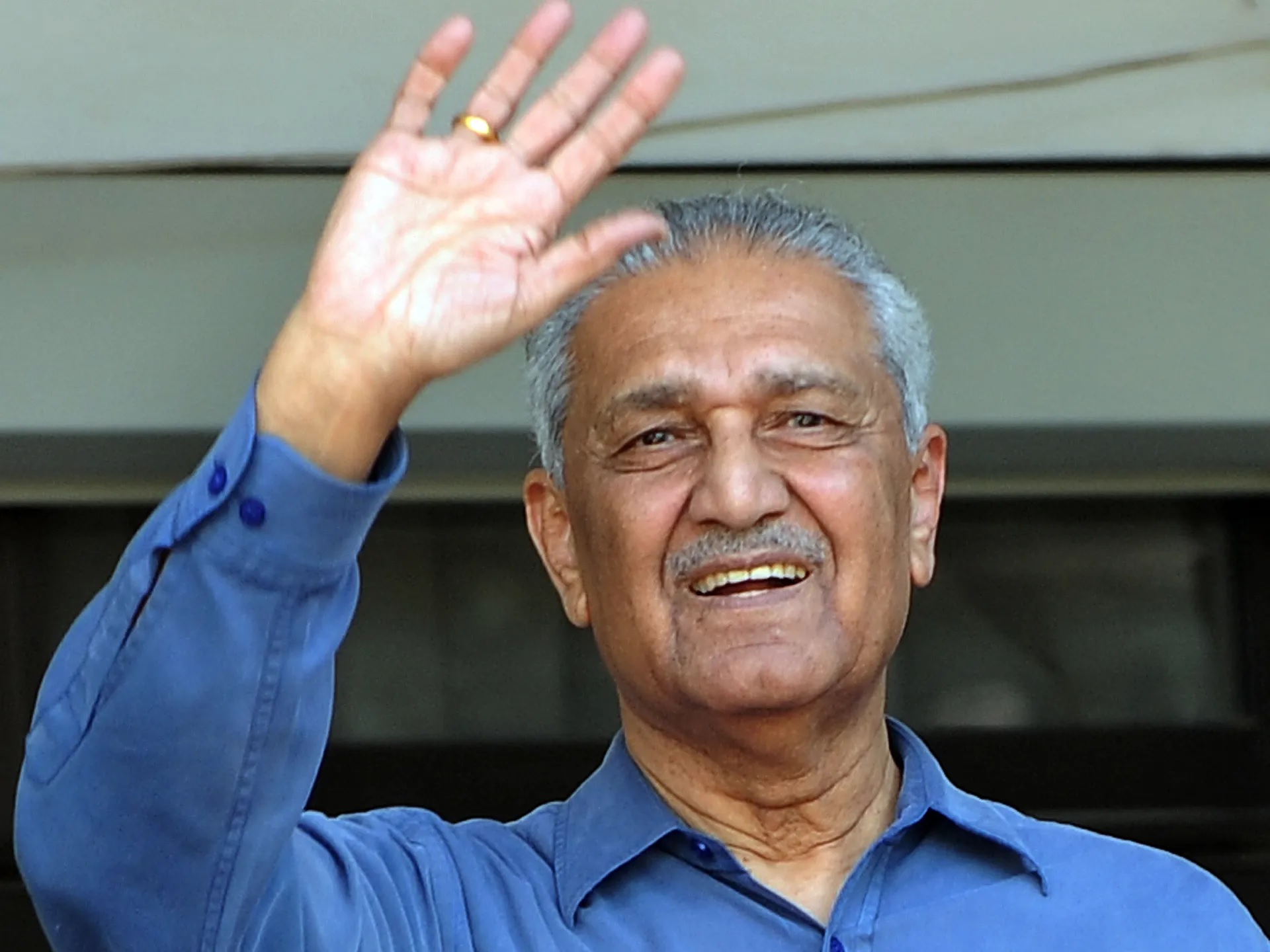
Dr. Abdul Qadeer Khan, affectionately known as A.Q. Khan, is widely celebrated as the “Father of Pakistan’s Nuclear Program.” His contributions to science and defense not only elevated Pakistan to a new level of self-reliance but also safeguarded the nation’s sovereignty in a volatile region. For many Pakistanis, Dr. Khan is more than a scientist—he is a national hero whose legacy of patriotism, brilliance, and resilience continues to inspire generations.
Early Life and Education
Dr. Abdul Qadeer Khan was born on April 1, 1936, in Bhopal, India. In the aftermath of the partition in 1947, his family migrated to Pakistan. After completing his early education, Khan pursued higher studies in Europe, earning a degree in metallurgy from the Netherlands and later, a doctorate in metallurgical engineering from Belgium.
His education in Europe allowed him to work with some of the most advanced technology of the time. He gained valuable experience working at a European uranium enrichment facility, where he learned the intricacies of centrifuge technology—a technology that would play a pivotal role in his future efforts to develop Pakistan’s nuclear capabilities.
Contribution to Pakistan’s Nuclear Program
In the early 1970s, following Pakistan’s defeat in the 1971 war and India’s successful nuclear test in 1974, the need for Pakistan to develop its nuclear deterrent became urgent. It was at this crucial juncture that Dr. A.Q. Khan offered his services to the government of Pakistan.
Khan’s return to Pakistan marked the beginning of a transformative era in the country’s defense strategy. He was given charge of the Kahuta Research Laboratories (now called Khan Research Laboratories), where he spearheaded Pakistan’s uranium enrichment efforts. Despite limited resources and immense international pressure, Dr. Khan and his team achieved remarkable success. Under his leadership, Pakistan conducted its first successful nuclear test on May 28, 1998, in response to India’s earlier tests, making it the first Muslim-majority country to possess nuclear weapons.
Safeguarding Pakistan’s Sovereignty
Dr. Khan’s role in the successful development of nuclear technology is widely regarded as a crucial factor in maintaining Pakistan’s security and sovereignty. His work ensured that Pakistan had a credible deterrent against external aggression, particularly in light of the hostile relations with its neighbor, India.
The achievement not only bolstered Pakistan’s standing in the global community but also instilled a sense of pride and security within the nation. For many, Dr. Khan became a symbol of national pride, courage, and determination in the face of adversity.
National Hero and Legacy
Dr. Abdul Qadeer Khan passed away on October 10, 2021, leaving behind a legacy that will forever be etched in the history of Pakistan. His funeral was attended by thousands, including political leaders, military officials, and citizens from all walks of life. He was laid to rest with full state honors, a testament to the nation’s deep respect and gratitude for his services.
Dr. Khan’s work ensured that Pakistan remained secure in an unpredictable geopolitical landscape. His contributions to science and defense transformed the country, empowering it with a nuclear deterrent that still serves as a cornerstone of its defense strategy today.
Dr. Abdul Qadeer Khan will always be remembered as a visionary who dedicated his life to serving Pakistan. His brilliance as a scientist, his unwavering commitment to his country, and his determination to see Pakistan rise as a strong, independent nation make him a true national hero. His legacy is a reminder that through perseverance, knowledge, and love for one’s country, even the most daunting challenges can be overcome. Dr. Abdul Qadeer Khan will forever remain the “Real Hero of Pakistan.”

Unity, Faith, and Discipline: The Cornerstones of Pakistan’s Motto as “Aik Qaum” (One Nation)

Aik Qaum: The Fusion of Integrity and Patriotism








